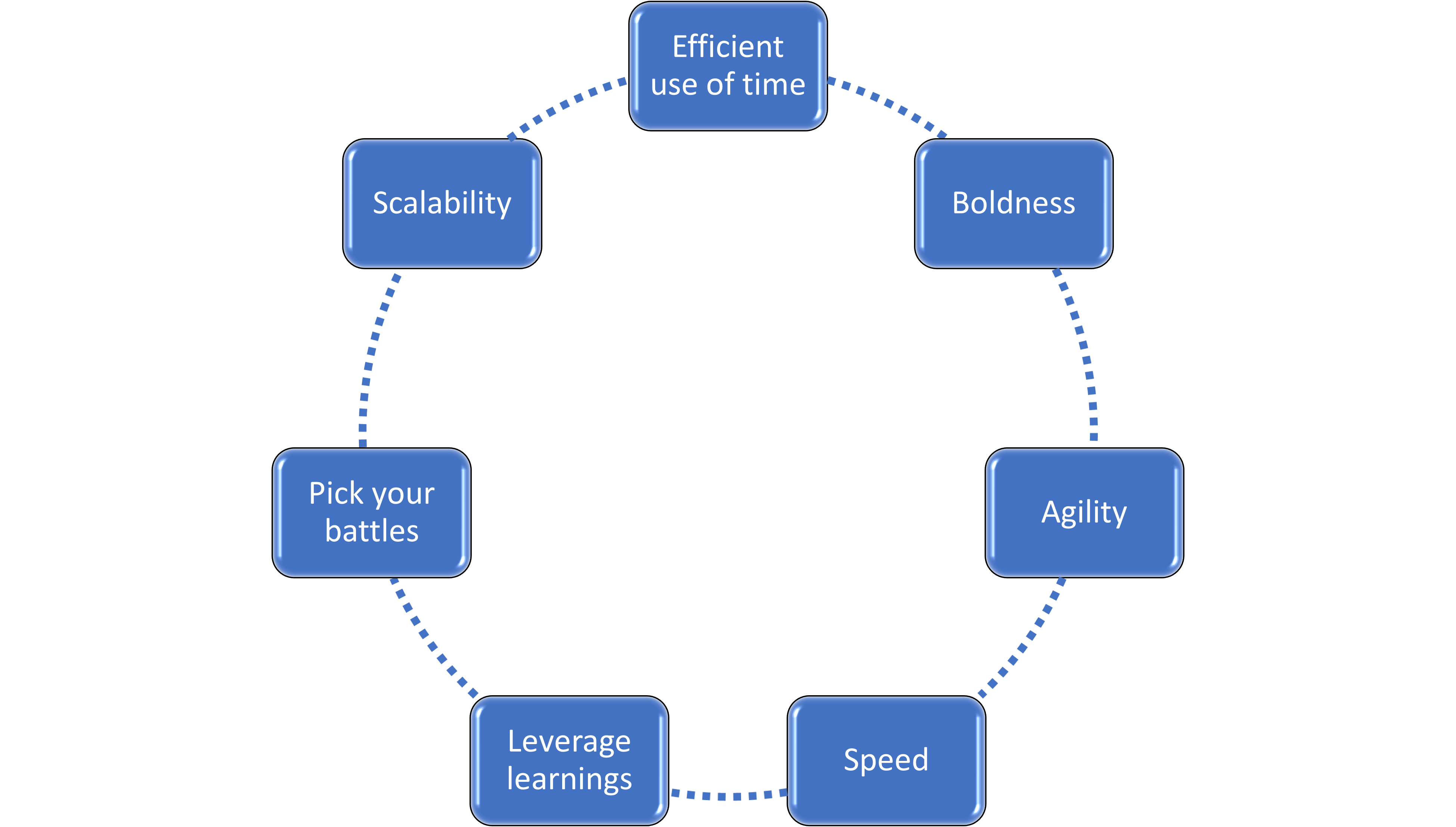The biotech sector has seen its fair share of unsettling dynamics over the past 18 months. From unprecedented growth to wavering confidence from investors, emerging biotech organizations have had to become both resourceful and creative. At the same time, Big Pharma and the medical device firms have turned around COVID-19 diagnostics, vaccines, and therapeutics at a stunningly impressive pace, in part due to decades of investment in the people and the scientific advances they pioneer.
The pressure on emerging and small biotech companies to do more with less and maximize results is only projected to continue. This creates a mindset of survival and can innately limit the creative and risk-taking approach needed to go from surviving to thriving. Being a small fish in a big pond in these times requires unprecedented resourcefulness and discipline.
How do you balance being scrupulous without sacrificing being audacious? What organizational characteristics, typically associated with a smaller biotech setting, need to be balanced with the might of a large research and development (R&D) organization to deliver an advantage over competitors? And what challenges should be acknowledged and pre-emptively addressed?
Assessing the Organization’s Capabilities
A “winning underdog” approach is grounded in an honest assessment of your company’s capabilities regarding the regulatory and commercialization process that lies ahead. Each organization will have a unique blend of strengths to build on and limitations to overcome. We identify seven key attributes that favor the smaller biotech:
 1. Efficient use of time: For example, is every matrix team alignment meeting critical or can you allocate the time to dig into the data:
1. Efficient use of time: For example, is every matrix team alignment meeting critical or can you allocate the time to dig into the data:
- Market insights – Ensure you have a strong understanding of the basis for the unmet need and how your product’s target profile is viewed by key stakeholders.
- Product differentiation – At surface level, we know this is a must. George Merck (1894-1957) provided seminal guidance with “Good Medicine is Good Business.” How will this medicine impact the lives of people in a real-world setting, far removed from the sanitized randomized controlled trial (RCT)? What exactly is the “place-in-therapy” for your drug? How will you leverage your organization’s capabilities to maximize the product’s value?
- Precision – Learning is one thing, executing is another. Be precise about how you plan to deliver on your commitments and what key performance indices you will use to track progress including knowing when to refine, redirect, or stop a specific activity?
2. Boldness: Assess your firms risk tolerance especially when it comes to knowing where and when you can afford to cut corners. Condition your organization’s leadership team to allowing decisions to be made without layers of political quicksand. Explore disruptive, creative strategies that may involve more risk and lay out the pros and cons of each. However, acknowledge that part of being successful with a “fail fast” mentality is to have the time to fix mistakes. For example, if you are within a year of launch, embarking on a bold, novel launch strategy is likely not going to provide you with enough time to course correct if challenges arise.
3. Agility: Nimbleness, quick turns, and speed are a smaller fish’s advantages for survival in a big pond. Understanding what is involved in making a quick change or pulling the plug on a strategy is critical before embarking on any key investment decisions.
4. Speed: How fast does your organization move? The advantage of being in a smaller firm is ease and speed of access to the key decision makers, and hopefully an empowered workforce, thus increasing the speed at which change can be made. Use this to your advantage.
5. Leverage learnings: We can all learn from others, be it from successful or failed product launches, even from companies with a completely different business model and inventory of products and capabilities. If your drug is first-in-class, how did other novel products inform and engage the relevant stakeholders; if your drug is later-to-market, what missteps by others may present an opportunity for you?
6. Pick your battles: Savviness is the weapon of choice here. This is where not correctly assessing your capabilities could bring unwanted challenges. Acknowledge your strengths and limitations and be willing to seek support when you are out of your element or the resources you need are insufficient. Accept that you do not have the ability to do everything and that you need to prioritize what is possible given the resources at your disposal.
7. Scalability: How equipped are you for battle? Honesty is the best policy here. If you are not ready today, then determine how you will get ready for tomorrow. Make a list of resources—human capital and other—that will equip your company for success both in the near- and longer-term challenges. It is imperative to solve for any sizeable gaps—if there are not any immediate or near-term fixes, then this needs to be accounted for to ensure the strategies you set truly match your firm’s capabilities. A great example of this is when considering risk tolerance. The C-suite, regulatory, and commercial leaders may all have different appetites for risk, and this will have to be resolved in order to provide clarity to the wider organization on the level of boldness to be pursued.
Go Fish—Take Home Messages
Assuming you have a good handle on what the company’s strengths and weaknesses are, you can now move on to building your launch strategy and tactical plan.
Launching in a highly competitive environment requires constant vigilance—some or most of the seven attributes of a smaller biotech may appear to be intuitive, but you would be surprised how big the pond can become without truly understanding the lay of the land.
Socializing your assessment of the company’s capabilities across all levels of the organization will ensure alignment among key stakeholders and a create a shared vision for how to build a foundation leveraging these capabilities.
Once you have completed your preparations, it’s time to jump in the deep end!











